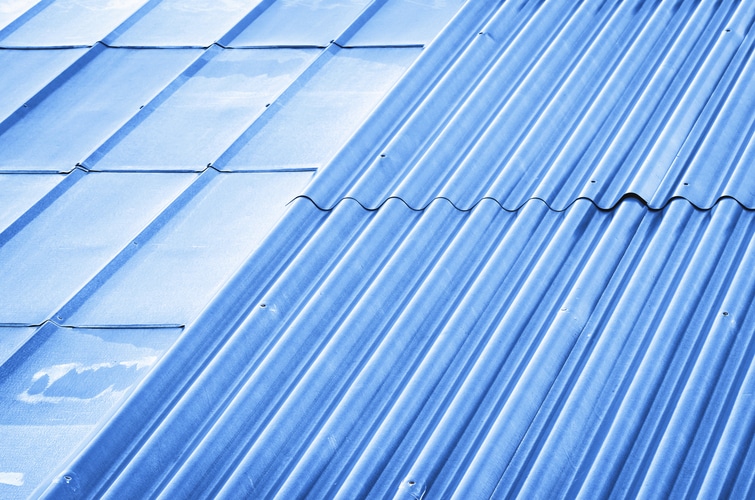500 Hood Road, Suite 320Markham ONL3R 9Z3

Roofs are a critical component of a building, keeping water and other elements out. A roof system includes the covering, frame, insulation, sheathing, ventilation, gutters, and weatherproofing, as well as many other elements related to roofing systems.
International Institute of Building Enclosure Consultants (IIBEC), The Canadian Roofing Contractors Association, and the National Roofing Contractors Association, provide technical guidance on roofing systems.
Roofs shed water via their slope. The steeper the slope, the faster water can run off, so it is less likely to leak through. Even flat roofs and their attached decks and gutters have a slight slope for drainage. A-framed gabled roofs are common, with a range of pitches to let water and snow run off easily; however, especially for commercial buildings, flat roofs are very popular.
Flat roofs, or low-sloped roofs, have efficient, cost-effective designs, and provide space for mechanicals or rooftop mechanical equipment. To reduce leaks, flatter roofs need larger sheets of roofing product, to reduce the number of seams. Asphalt roll-roofing is popular for this reason.
Insulation is an important part of the roof system, but it can cause water and water vapour to get trapped in the roof assembly, making vapour retarders or vapour barriers essential.
Various types of membranes are used with flat or low slope roofs, to keep them watertight, since these roofs do not have the slope for the rain to run off quickly. Membranes can be bonded down with mechanical fasteners and adhesive or, if the roof deck can handle the weight, a ballasted, or loose rock, the roof can be used.
Single-ply membranes are rubber or other synthetic material sheets that can be ballasted or bonded to protect buildings. The two main types are thermosets and thermoplastics. Thermoset membranes use rubber polymers, usually EPDM rubber. Thermoplastic roof systems use thermoplastic polyolefin or PVC. Thermosets and thermoplastics are very durable and excellent for protecting against weathering, moisture, UV, and most chemicals.
Some critical considerations in low slope roof decisions are building height, amount of wind, roof traffic, and other such forces. The specific manufacturer and roofing contractor used is also key.

Asphalt shingles are common. Three-tab shingles are set in a single, flat layer, with three tabs evenly placed, fitting together evenly once installed for a smooth surface. Architectural asphalt shingles are usually thicker and shaped to look like different roof shingles and have a more layered, three-dimensional appearance.
Asphalt is excellent for low slope roofing. Built Up Roofing, Modified Bitumen and Hybrid Systems are varieties of asphalt roofing.
Built Up Roofing systems alternate layers of bitumen asphalt and roofing felts which are reinforced with either glass fibre or organic mats. The mats are known as ply sheets and combine with the bitumen for a strong roof surface barrier. The layers are called plies; a four-layer flat roof membrane system is classified as four plies.
Single-ply commercial roofing membranes are flexible sheets of compounded synthetic materials. Single-ply roofing systems are strong, flexible, and durable. Single plies are low maintenance and long-lasting.
Mod Bit systems are asphalt-based, with polymerized rubber or plastic, and reinforced with fibreglass making them durable, flexible, and waterproof.
Hybrid systems are a combination of Mod Bit and Built Up Roofing.
Various metals are used for sloped metal roofs. Corrugated galvanized steel is very common, but copper, aluminum, stainless steel, and tin are also used.
Metal roofing is useful for energy-efficient roof systems where the building owner wants to reflect light and heat from the sun instead of absorbing it as asphalt roofs do. Metal is also excellent for being strong, long-lasting, and heat resistant.
Restoring a metal roof surface involves acrylic coatings made of polymers that form a complete roofing membrane over the metal. They are often also applied to metal roofing systems to improve waterproofing, and UV and rust protection. They adhere to almost any metal surface for a seamless, watertight seal.
Slate is traditional roofing but requires a specialized roofer. There are modern materials designed to imitate it, for better performance.
Modern materials, like coated metals and thermoplastics, are now available for tiles and designed in panels for an easy-installation method.
Cedar and other wood shingles use a ventilating underlayment to create a space between the shingle and deck, to allow shingles to dry, and prevent moisture damage. Wood shingles can improve insulation.

The durability of roofs and materials varies considerably. Many flat roofs will last 15 to 20 years, while asphalt and cedar shingles may last 25 to 30 years. Metal and slate are the most durable, lasting over 50 years. Often the more durable a roofing system is, the more expensive it will be, but the cost is offset by the length of time it will last.
1. What are the critical components of a roofing system? A roofing system includes covering, frame, insulation, sheathing, ventilation, gutters, weatherproofing, and more.
2. What is the importance of roof slope in shedding water? Roof slope determines water runoff speed, reducing the likelihood of leaks.
3. What are single-ply membranes for low-slope roofs? Single-ply membranes like EPDM, TPO, and PVC provide flexibility, durability, and weather resistance.
4. What is built-up roofing? Built-up roofing alternates layers of bitumen asphalt and reinforced felts for a strong surface barrier.
5. Which roofing materials are energy-efficient and durable? Metal roofing reflects light and heat, making it energy-efficient and long-lasting.
6. How long do different roofing materials last? Flat roofs last 15-20 years, asphalt/cedar shingles 25-30 years, and metal/slate over 50 years.
7. What factors influence roofing material durability? Roofing materials' durability depends on factors like material type, quality, installation, and maintenance.
At Accent Building Sciences Inc., we are roof consulting experts, providing professional roof design, inspection, and specification services. Our roof condition assessments will identify any deficiencies, weaknesses, or deteriorations, as well as what repairs are needed. They will also determine if your roof is performing as it should. We will provide you with all the necessary information for you to make educated decisions.
Contact us today for expert advice on roofing solutions.

Naji Hassan, a renowned professional in Building Science and Engineering, brings a wealth of knowledge and experience to his field. Educated at Beirut Arab University and Harvard Business School Online, Hassan has honed his expertise in structural and municipal engineering, building science, and business management. As the President of Accent Building Sciences and an experienced Senior Project Manager, he has made significant strides in building envelope engineering, building condition assessments, and energy retrofit programs. His commitment to innovation and excellence is evident in his approach to large-scale project management and his active participation in industry organizations. Hassan is not only a leader in his field but also a prolific writer and thought leader. He regularly shares his insights and experiences through articles on LinkedIn, which can be found at LinkedIn Articles. Additionally, he maintains a blog where he delves deeper into various aspects of building science, accessible at Accent Building Sciences Blog. Outside of his professional pursuits, Hassan enjoys travel, golf, languages, gardening, and music, reflecting his diverse interests and well-rounded character. Naji Hassan's journey in building science and engineering is not just a career but a testament to his lifelong dedication to learning, teaching, and inspiring others in his field.

500 Hood Road, Suite 320Markham ONL3R 9Z3